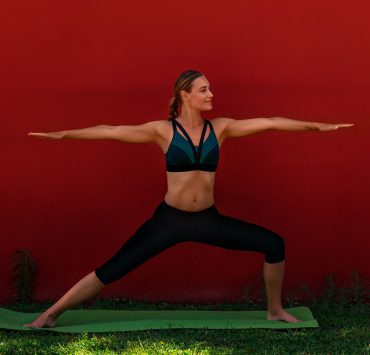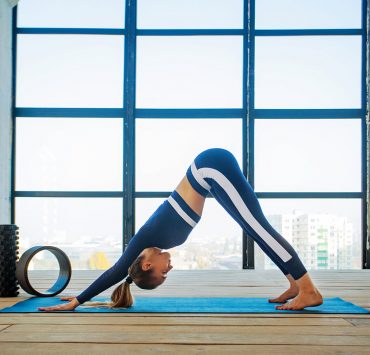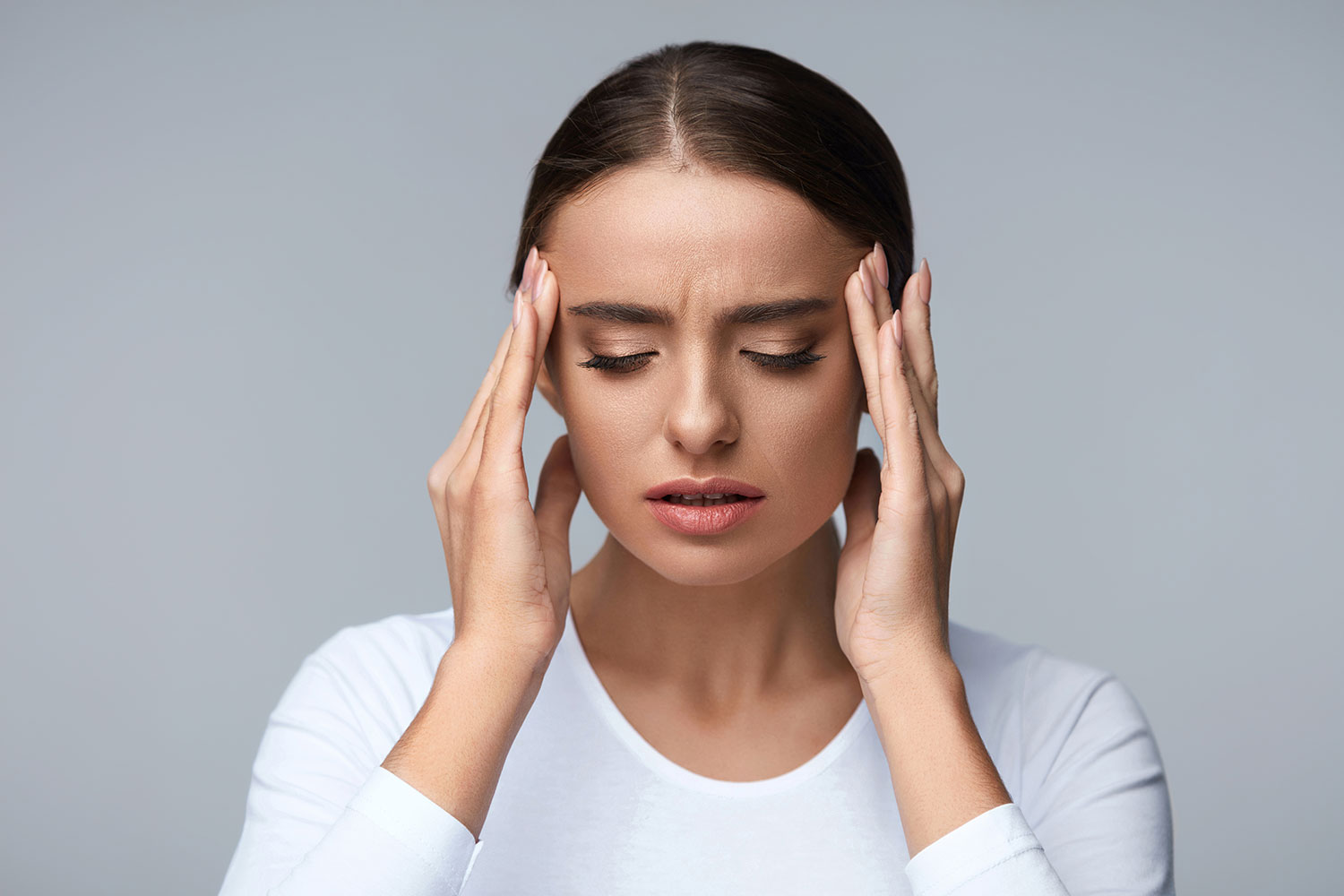
Having been a teacher’s assistant at over 50 yoga teacher…
A migraine is a common type of headache. Migraines vary in intensity and can be very debilitating and frustrating to resolve. This type of headache pain is often accompanied by nausea, sensitivity to light and sound, dizziness, and fatigue.
If you have ever experienced a migraine, you have likely sought out ways to reduce your discomfort. Yoga has been proven clinically effective in reducing migraine symptoms. A regular yoga practice can help relieve tension in your neck muscles. Yoga can help alleviate anxiety and stress. These are all beneficial ways to reduce migraine symptoms.
Here are 10 yoga postures to try out to reduce your migraine pain:
Savasana – Corpse Pose
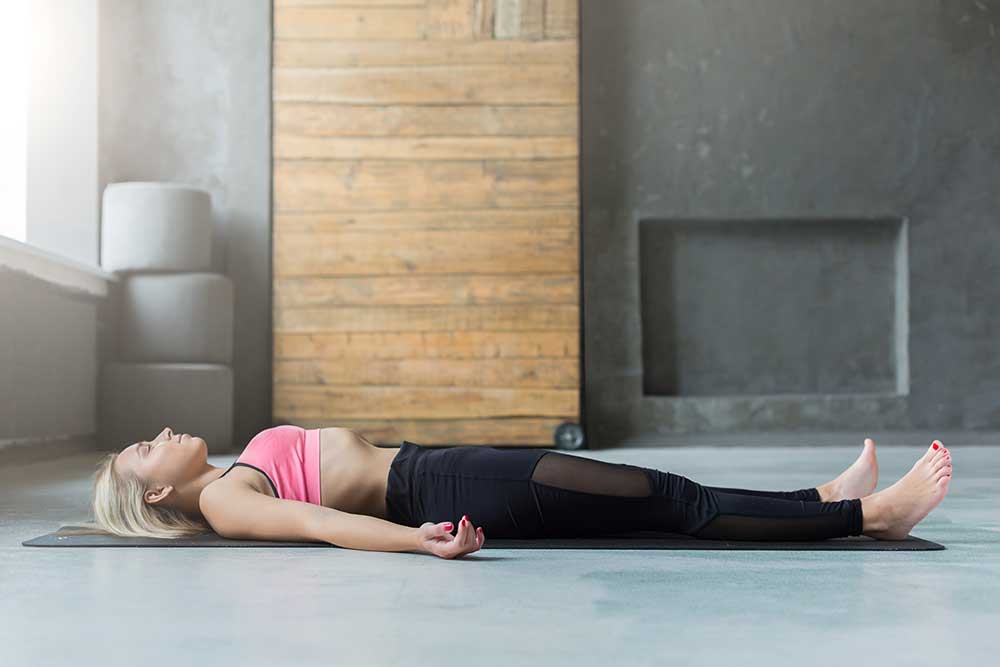
This pose should not be skipped out on at the end of a yoga practice. If you have migraine pain, this posture can help with both neck tension and stress.
Lying on your back relieves your neck the task of having to hold up your head against gravity. Savasana is a time to close your eyes, take deep breaths, and quiet your mind. These actions will stimulate your parasympathetic nervous system, reducing the damaging effects of stress on your migraine pain.
Lie on your back on your yoga mat or another comfortable surface. Face your palms towards the sky by your side, and bring your feet mat width apart.
Close your eyes and take slow breaths. Each exhale focuses on relaxing your body and letting go of any tension you are holding onto. Continue for 5 minutes or more.
In savasana, you want your mind to be quiet and your body to be relaxed. Try not to fall asleep and avoid fidgeting.
If you are having trouble getting comfortable, you can try placing a pillow underneath your knees. You can also place a small pillow under your head if your neck feels uncomfortable. Scan your body from the crown of your head to the tips of your toes, and each exhalation progressively work your way down your body, letting each muscle group relax.
To help quiet your mind, try practicing this posture in a dark room, or use an eye cover. Focus your attention on your third eye center, the space on your forehead between your eyes. Count the duration it takes to draw in your inhale, and count the duration to release your exhale.
With practice, savasana will help your body relieve both stress and muscle tension.
Balasana – Child’s Pose
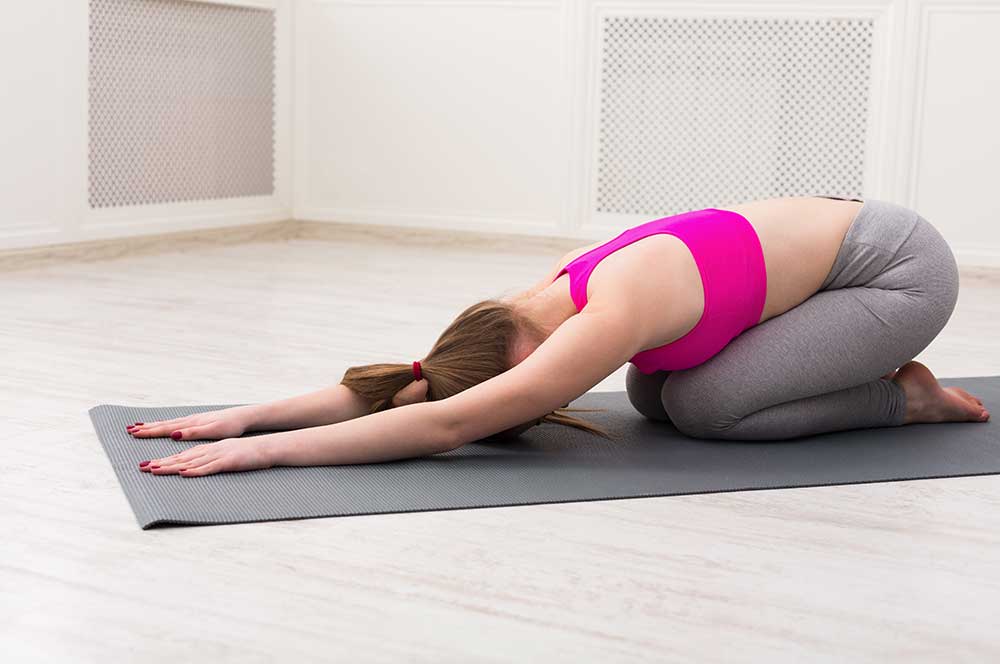
Child’s pose gives your neck a break from holding your head up against gravity, which can relieve sore muscles contributing to your migraine pain. Child’s pose is a forward bend, a movement that aids in reducing stress and stimulates the parasympathetic nervous system.
Begin on your hands and knees. Draw your big toes to touch, and sink your hips down towards your heels. Walk your hands out in front of you as you lower your torso towards the ground.
Seal your lips and begin taking your breaths through your nose. On your inhale, feel your rib cage and belly expand. On your exhales, relax your shoulders away from your ears and sink your hips further towards the ground.
This posture should be relaxing to receive its full benefits. If you feel any discomfort, try modifying your position so you can remain in child’s pose for a full minute.
If you have pain in your knees, try placing a pillow between your calves and your thighs for more support. If your groin feels uncomfortable, try walking your knees further out towards the sides of your mat for more space. Reach your hands back towards your heels if your shoulders feel uncomfortable.
Marjaiasana – Cat Cow Pose
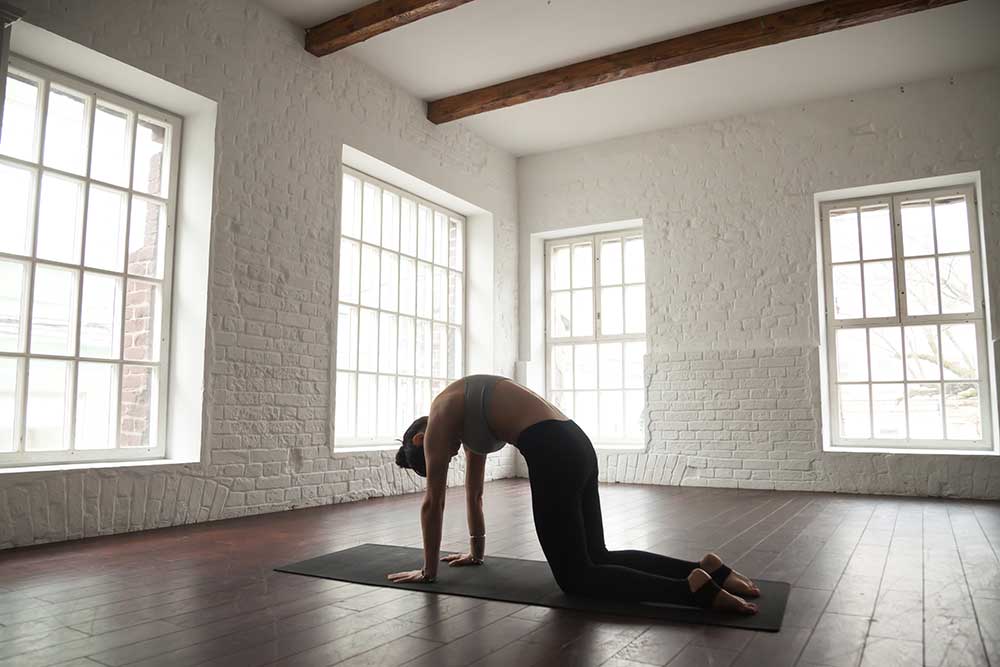
These poses will help mobilize your thoracic spine, which has beneficial effects on your neck muscles for reducing migraine pain. When transitioning between these two postures, linking the transitions with your breath will help reduce stress and anxiety.
Begin on your hands and knees. Look down at your palms and place them, so your wrists are directly under your shoulder. Press firmly into all four corners of your hand, and spin your elbow creases towards the front of your mat. Feel your knees align directly under your hips.
Before the movement, engage your abdomen and hug your upper arm bones and inner thighs energetically together.
On your inhale, begin by dropping the breast bone down towards the ground and gazing forward for cow pose. In this backbend, you should feel an opening across the chest and sensation between the shoulder blades.
On your exhale, press the space between your shoulder blades up towards the sky, rounding the spine for cat pose. Let the crown of the head release towards the mat as you gaze between the arms.
Continue transitioning between these two postures for 10 cycles of breath. Focus on the space between your shoulder blades as the posture’s apex, avoiding any pain or stress in the lower back or neck.
If this posture hurts your wrists, try making fists instead of having your palms down flat. You can place a pillow under your knees for more comfort.
Sasangasana – Rabbit Pose

Rabbit pose will stretch the muscular and neural tissue along your spine, releasing muscles contributing to your migraine pain. It is also a forward fold, helping reduce stress and anxiety.
Begin seated with your knees bent and hips on your heels. Lower your torso towards the ground so your forehead is on the mat. Then, reach your hands back to hold onto your heels.
Press the space between your shoulder blades up towards the sky as though you were doing cat pose. Keeping a firm hold on your heels with your hands, begin lifting your hips off your heels to stretch the spine. Hold here for 5 breaths.
Try placing a pillow beneath your knees or between your calves and thighs if this posture bothers your knees.
Shalabasana – Locust Pose
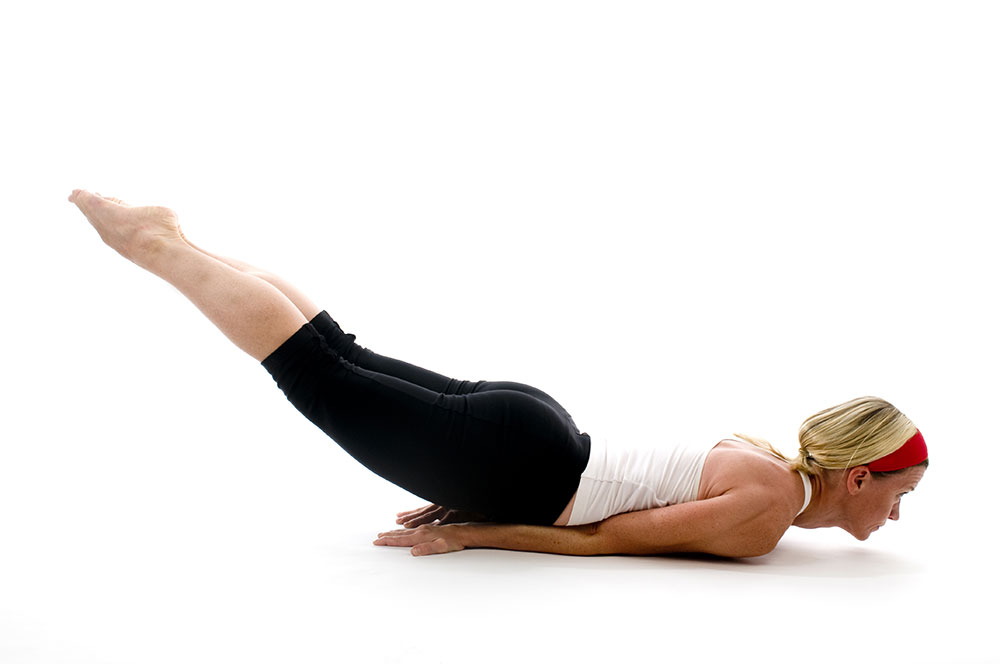
It’s always better to prevent pain from happening than to try to resolve your painful migraine symptoms once they arrive. Strengthening the muscles across the upper back can help improve your posture and prevent the muscles in your neck from overworking and contributing to a migraine. Shalabasa is a great pose to work on building this strength.
Begin by lying on your stomach. While you are setting up the pose, turn your head to look off to the side. Place your legs close together so the inner thighs touch, and reach your fingertips back behind you with the hands still resting on the ground.
Before initiating movement, engage your lower abdomen to protect your lower back and squeeze your shoulder blades together.
Lift your chest, palms, and feet off of the ground. You should feel your upper back, back of your arms, and gluteal muscles engage. Avoid any pinching in the lower back or neck. Keep your gaze at the top of your mat, and hold for 5 breaths.
Uttanasana – Standing Forward Fold
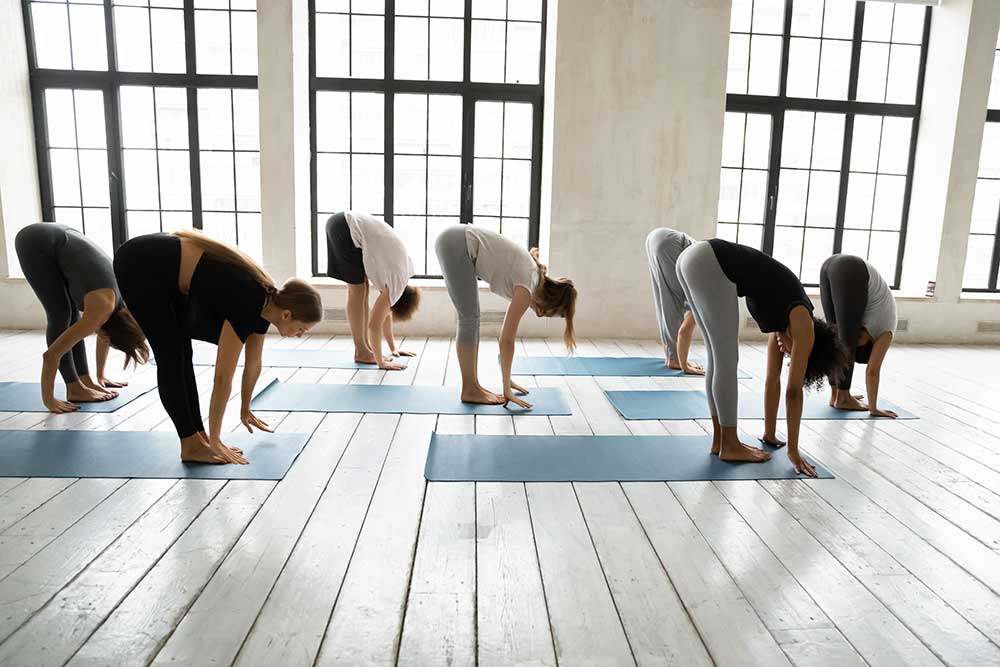
Sometimes it’s difficult to release muscle tension that you are holding at the base of your neck. If that’s the case for you, try this pose! This forward fold helps reduce anxiety and relieve tension at your neck and upper back.
Start standing at the top of your mat. Bring your feet hip-width apart. Before initiating movement, engage your abdomen and quadriceps.
Take your hands to your hips and begin to hinge the body forward. Once you reach the depth of your fold, release your fingertips towards the ground. If they don’t reach, you can take blocks underneath your hands.
Once in your fold, make sure that your hips are aligned on top of the ankles. Give your head a few gentle rocks side to side so you can completely relax the face, jaw, and neck in this fold. Take 5 slow breaths.
You may feel a stretch in your hamstrings, lower back, or upper back. You can bend your knees if needed. Try closing your eyes for additional relaxation.
Matsyasana – Supported Fish Pose
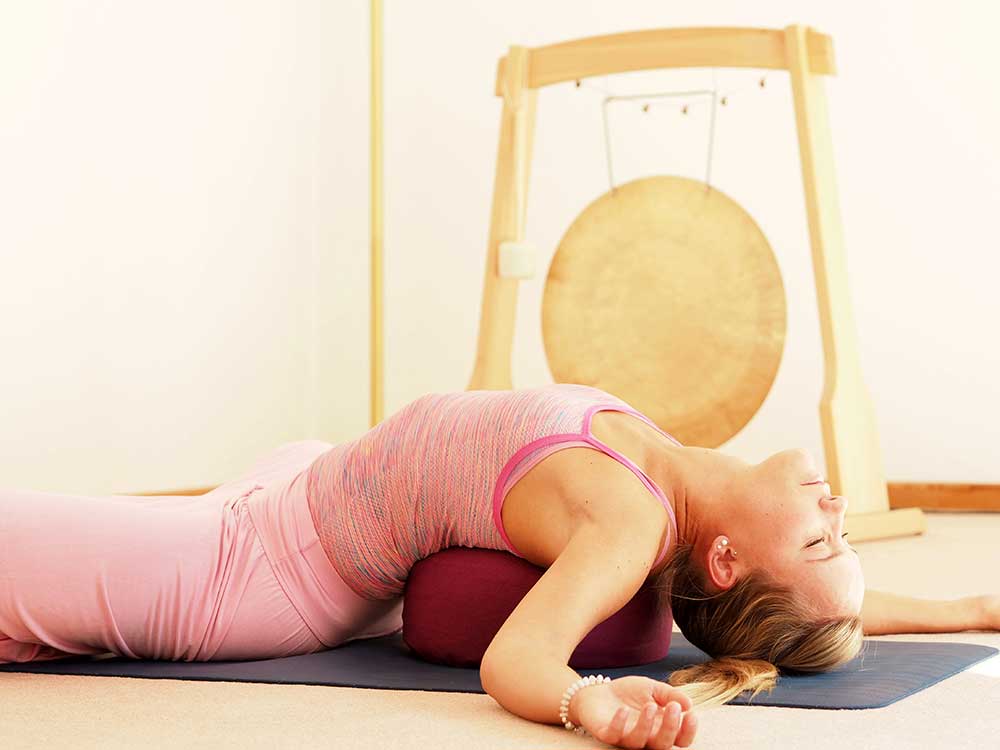
Prevention of pain is key when managing your migraines. This pose works on stretching the muscles at the front of your chest, which reduces painful muscular overuse at your neck.
You need two blocks for this pose. If you don’t have blocks, you can use a firm pillow.
Start by placing a block on its low setting on your mat, so when you lie down on your back, the block will be placed at the upper back. The long edge of the block should be parallel to the top of the mat. The second block should be placed the same way in a place where your head will rest on it when you lie down.
Sit facing away from the blocks, then lower your body onto them as you lie back. Keep the knees bent to start. Adjust the blocks as needed to get one block under your head and one at your midback.
Open up the arms into a goal post shape position and feel a stretch across the front of your chest. Once here, you can adjust the blocks higher if you need a greater amount of stretch. You can also straighten the legs out or place the soles of the feet together as other variations.
Let your eyes close, relax your body, and take 10 slow breaths.
Viparita Karani – Legs up the Wall Pose
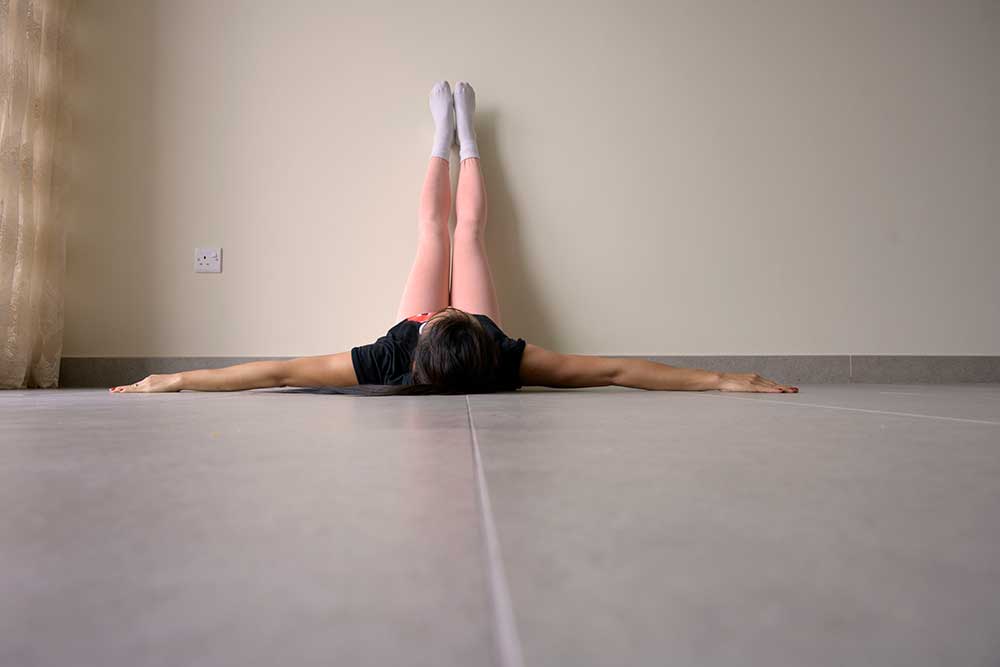
This is one of the ultimate relaxation poses, giving you a way to calm your mind and ease your migraine pain. Lying on your back also gives your overworked neck muscles a break.
Lie on your side and scoot your sit bones up towards a wall. Your knees will have to bend to make this contact. Once you are close enough, keep the sit bones on the wall and roll onto your back. Straighten out your legs, so the soles of the feet press up to the sky.
You shouldn’t have much effort in this pose. The legs should rest comfortably on the wall, and your upper body is relaxed on the mat. Let your eyes close and remain in this position for 5 minutes. Focus on taking slow breaths and letting your mind quiet down during this time.
For additional ways to create a relaxing environment, try turning the lights off, using an eye pillow, or covering your upper body with a blanket.
Supta Matsyendrasana – Supine Twist Pose
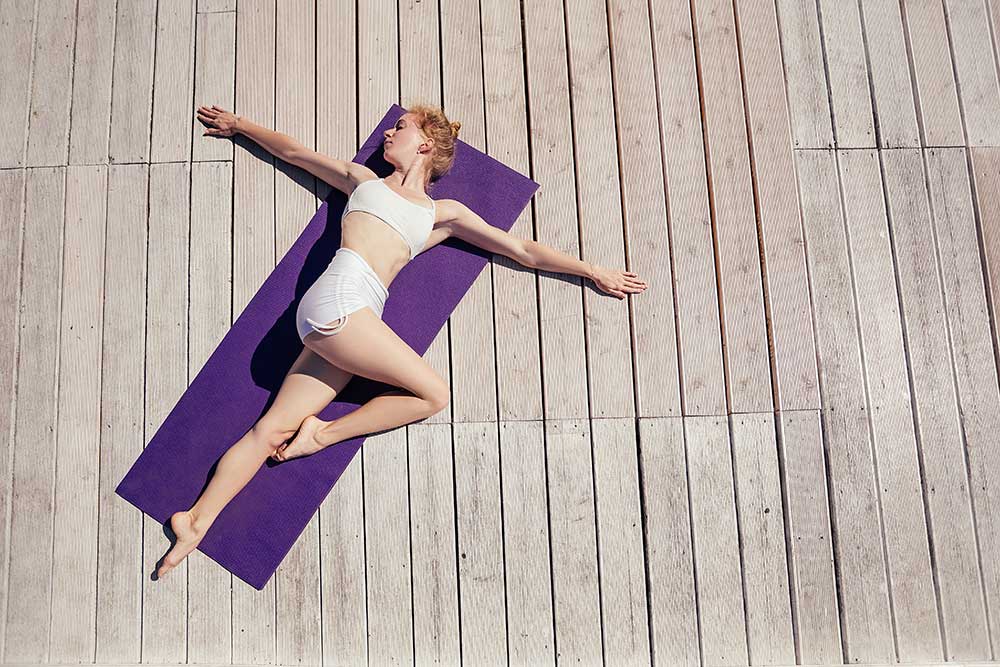
Supine twist mobilizes the middle back and stretches the front of the chest, providing relief to the muscles in your neck that contribute to your migraine symptoms.
Start by lying on your back with your knees bent. Take your arms out into a “T” shape and draw the knees to your chest. Engage your abdomen.
Carefully let the knees fall over to the right and shift your gaze over your left palm. If the knees don’t touch the ground and feel uncomfortable having them unsupported, place a pillow under your knees.
You should feel a stretch between your shoulder blades and at the front of the chest. Hold for 5 breaths, then switch sides.
Suhkasana – Easy Pose With a Neck Side Bend and Half Bind Variation
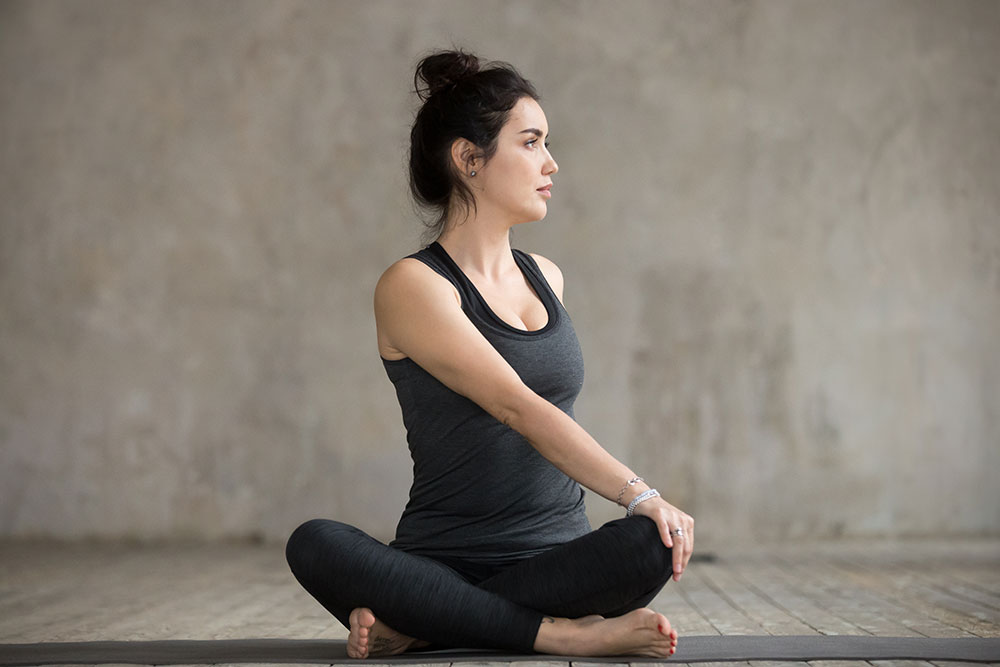
This pose will improve muscle length at your neck, which can help reduce migraine pain.
Begin sitting in a cross-legged position. If your hips feel tight in this pose, sit on a block. Find an upright posture, and bend your head to the right.
Take your left hand behind your back, maybe reaching all the way over to touch your right hip. Relax your left shoulder down, feeling a stretch along the left side of your neck.
Hold here for 5 breaths, then repeat on your second side.
Work these stretches into your schedule several days a week to help prevent migraine pain, and address migraine symptoms when they occur.
What's Your Reaction?
Having been a teacher’s assistant at over 50 yoga teacher trainings worldwide, Olivia May has a firm grasp on the fine art of yoga and meditation. In her work, she carefully reflects on a vast expanse of knowledge to help others find peace in both body and mind.






